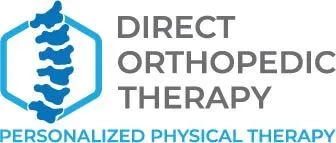When facing an injury or chronic pain, the decision between physical therapy and surgery can feel overwhelming. Both options aim to restore mobility and reduce discomfort, but the approach, risks, and outcomes can differ significantly. At Direct Orthopedic Therapy, we specialize in offering personalized, non-invasive treatments tailored to your unique needs, helping you recover safely and effectively without the risks of surgery.
We’ll explore the differences between physical therapy and surgery, highlighting why non-invasive options are increasingly preferred by patients and healthcare professionals alike.
Understanding the Differences between Physical Therapy and Surgery
Physical Therapy: A Non-Invasive Approach
Physical therapy focuses on restoring function, improving strength, and alleviating pain through targeted exercises, manual techniques, and modalities such as ultrasound or electrical stimulation. Sessions are tailored to the individual’s needs, addressing the root cause of discomfort while promoting long-term recovery.
Key Features of Physical Therapy:
- Non-invasive: No incisions, anesthesia, or hospital stays.
- Customizable: Tailored treatment plans to suit your specific condition and goals.
- Progressive: Gradual improvements lead to sustainable results.
Surgery: An Invasive Alternative
Surgery often involves structural changes to the body, whether repairing a ligament, removing damaged tissue, or replacing a joint. While necessary for certain severe cases, surgery carries risks such as infections, complications from anesthesia, and prolonged recovery periods.
Key Features of Surgery:
- Invasive: Requires incisions and, often, extensive recovery.
- Permanent: Irreversible changes to the body.
- Risky: Includes potential complications, such as infections or failed outcomes.
Why Choose Physical Therapy?
1. Lower Risks and Fewer Complications
Unlike surgery, physical therapy avoids the risks of anesthesia, infections, and scarring. Non-invasive treatment focuses on healing the body naturally, reducing the chances of adverse outcomes.
2. Faster Recovery and Rehabilitation
Surgery often requires weeks or months of downtime before rehabilitation can begin. Physical therapy, on the other hand, starts right away, accelerating the healing process without the need for recovery from invasive procedures.
3. Cost-Effectiveness
The financial burden of surgery—including hospital stays, medications, and follow-up care—can be overwhelming. Physical therapy is a more affordable solution, offering long-term benefits without hidden costs.
4. Personalized Treatment Plans
Every injury and individual is unique. Physical therapy offers tailored solutions that adapt as you progress, ensuring your treatment evolves to meet your needs.
5. Preventive Care
Physical therapy doesn’t just treat existing issues; it also helps prevent future injuries. Strengthening muscles, improving posture, and enhancing mobility reduce the likelihood of recurring problems.
When Surgery Might Be Necessary
While physical therapy is highly effective for many conditions, surgery may still be the best option for:
- Severe structural damage (e.g., complex fractures or torn ligaments).
- Advanced arthritis requiring joint replacement.
- Cases where conservative treatments have failed to provide relief.
Even in these cases, physical therapy plays a critical role in pre- and post-surgical recovery, improving outcomes and reducing recovery time.
Conditions Treated with Physical Therapy vs. Surgery
Physical Therapy
- Sprains, strains, and soft tissue injuries.
- Lower back pain and sciatica.
- Chronic conditions like arthritis.
- Sports injuries (e.g., tendonitis, muscle tears).
- Post-surgical rehabilitation.
Surgery
- Severe bone fractures or joint dislocations.
- Advanced spinal issues, such as herniated discs with nerve compression.
- Torn ligaments requiring reconstruction (e.g., ACL).
- Severe cases of degenerative joint disease.
Physical Therapy Success Stories
Countless patients have avoided surgery through consistent, targeted physical therapy. For example:
- ACL Injuries: Research shows that physical therapy can often restore function without the need for reconstruction in partial tears.
- Back Pain: Non-invasive techniques, including spinal stabilization exercises, frequently eliminate the need for surgical intervention.
- Rotator Cuff Tears: Many partial tears heal with manual therapy and strengthening exercises, avoiding the risks and downtime of surgery.
Direct Orthopedic Therapy: Your Partner in Recovery
At Direct Orthopedic Therapy, we believe in empowering patients with non-invasive solutions for a healthier, pain-free life. Our team of skilled therapists uses evidence-based techniques to address injuries and chronic pain, offering personalized care every step of the way. From sports injuries to post-surgical rehabilitation, we’re here to help you recover and thrive.
How We Can Help
If you’re considering your options between physical therapy and surgery, Direct Orthopedic Therapy is here to guide you. Our expert team will assess your condition and create a personalized treatment plan focused on achieving your recovery goals—safely and effectively. Avoid the risks and downtime of surgery by exploring non-invasive treatments tailored to your needs.
Contact us today to schedule a consultation and take the first step toward a healthier, stronger you.



